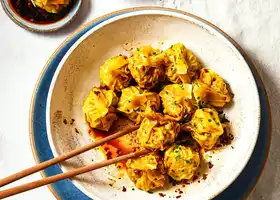
Pork dumplings
olivemagazineMake your own boiled pork and chive dumplings in just 45 minutes. Soft and pillowy, they're best served with soy sauce, chiu chow chilli oil and chopped chives
- Dairy-Free
Download Stashcook Now. Get the best meal planning app for your family.
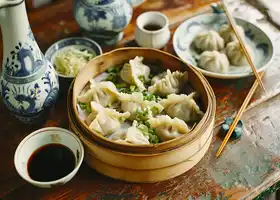
Get ready to experience the deliciousness of Pork Dumplings! These little pockets of joy are a staple in Chinese cuisine and are loved by many. Filled with flavorful pork and other tasty ingredients, these dumplings are sure to satisfy your cravings. Whether you boil, steam, or fry them, Pork Dumplings are a must-try dish that will leave you wanting more!
Discover 48 unique Pork Dumplings recipes. Each with it's own twist on the recipe. Read our review top find our top Pork Dumplings recipes out there.

Make your own boiled pork and chive dumplings in just 45 minutes. Soft and pillowy, they're best served with soy sauce, chiu chow chilli oil and chopped chives
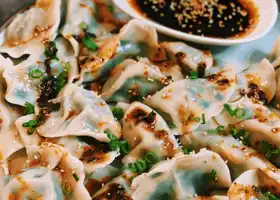
Welcome to DAY 2 of the Lunar New Year Series, and today we will be making Pork and Chives Dumplings, which brings you WEALTH in the New Year! Dumplings are a traditional lucky dish that symbolizes we...
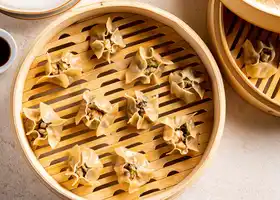
Siu mai is a very popular Chinese dumpling dish served as part of a dim sum brunch. This dumpling is open-faced, meaning it is not enclosed.
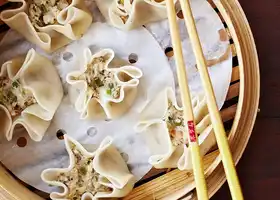
Learn how to make steamed Chinese dumplings with our easy step-by-step recipe instructions. Small, delicious parcels of succulent meat and fish with a kick of chilli and ginger, these dumplings are a ...
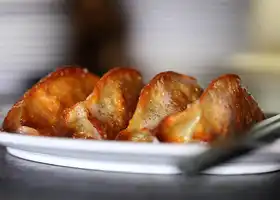
In Park Slope, Dale Talde engineered one of the most hunted-down bar snacks of 2012, a beer-friendly, street-cart collision known as the “pretzel dumpling.” Inside, there’s some slightly cured pork. O...
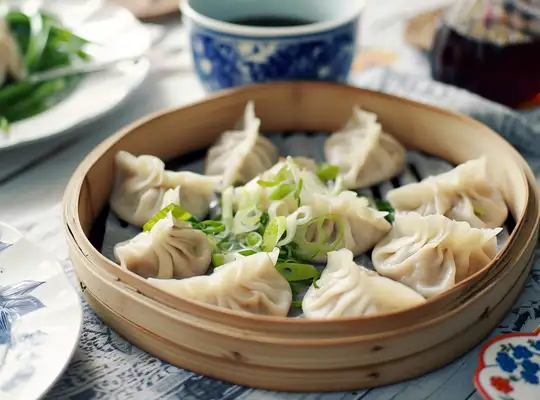
Recipes that can be made in less than 30 minutes.
The Pork Dumplings from Olive Magazine offer a straightforward approach to the classic dish, focusing on the essential flavors of pork, garlic, ginger, and chives. The use of balsamic vinegar as an alternative to Chinkiang black vinegar is a practical touch for those without access to Asian markets. However, the recipe may benefit from additional seasoning within the filling itself to enhance the pork's flavor. The inclusion of chiu chow chilli oil as a serving suggestion adds an inviting layer of heat for those who enjoy a spicy kick.
Tiffy Cooks' Pork and Chives Dumplings are packed with bold flavors thanks to ingredients like sesame oil, oyster sauce, soy sauce, and white pepper. This recipe stands out with its detailed dipping sauce that complements the dumplings' richness. Additionally, it offers versatility by providing both meat-based and vegetarian alternatives—making it inclusive for different dietary preferences. The use of chicken powder is unique but might not be suitable for all palates or those looking for more natural seasoning options.
Siu Mai Dumplings With Pork and Shrimp from The Spruce Eats introduce an exciting seafood element that sets them apart from typical pork dumplings. Incorporating shrimp into the mix alongside traditional Chinese seasonings like oyster sauce and sesame oil creates a nuanced flavor profile that seafood lovers will appreciate. While this recipe requires slightly more preparation due to handling both shrimp and mushrooms, it results in an elegant variation on classic dumpling fare.
Each recipe brings its own charm: Olive Magazine keeps it simple yet spicy; Tiffy Cooks packs in robust flavors while catering to varied diets; The Spruce Eats elevates tradition with shrimp sophistication. Your choice depends on whether you prefer classic comfort (Olive), bold taste (Tiffy), or an indulgent twist (Spruce). Regardless of preference, these recipes provide excellent starting points for exploring homemade dumplings' delightful world.
The ideal size for each dumpling wrapper is 3-4 inches in diameter. This allows for enough space to fill the wrapper with the pork filling and seal it properly without it being too thick or thin.
A variety of dipping sauces can pair well with pork dumplings, enhancing their flavor and adding a delightful contrast. Here are some popular options:
Remember that you can always adjust these sauces to your taste by adding more heat (with chili flakes or hot pepper), sweetness (with sugar or honey), acidity (with different types of vinegars), or umami (with extra drops of soy sauce). Experimenting to find your perfect match is part of the fun!
To prevent the dumpling dough from sticking to your hands while making the wrappers, you can follow these steps:
Remember that practice makes perfect when it comes to making dumpling wrappers, so don't get discouraged if they stick initially!
Pork dumplings and gyoza are both delicious stuffed dough creations, but they have some differences in their origins, preparation, and cooking methods. Here's a breakdown using markdown syntax for emphasis:
Both pork dumplings and gyoza often contain ground pork as their primary filling ingredient. However:
In summary:
While all gyozas could be considered types of dumplings due to their general form as stuffed dough pockets, not all dumplings are gyozas because "dumpling" is an umbrella term that includes many different varieties beyond just the Japanese style known as gyoza.
Seamlessly add your favorite Pork Dumplings recipes to your personal digital cookbook.
But that's just the start! Add recipes from cookbooks and magazines too. Stashcook's AI technology extracts recipes right off the page with just one click.
With Stashcook, organize all your recipes in one convenient place and master meal planning like a pro. Join the thousands already making meal planning simpler and more enjoyable.
Download Stashcook for FREE today and begin your journey to effortless meal planning.
Email:
hello@stashcook.com© Copyright 2026 Stashbox Ltd. All rights reserved.